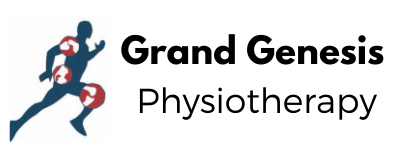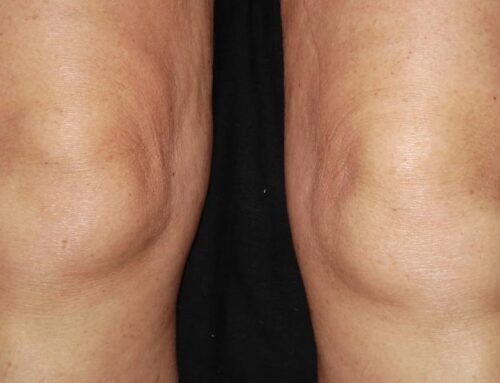In physical therapy, trained professionals evaluate and treat abnormal physical function related to, for example, an injury, disability, disease or condition.
According to the American Physical Therapy Association (APTA), a physical therapist is a trained and licensed medical professional with experience in diagnosing physical abnormalities, restoring physical function and mobility, maintaining physical function, and promoting physical activity and proper function.
Licensed physical therapists can be found in a range of healthcare settings including outpatient offices, private practices, hospitals, rehab centers, nursing homes, home health, sports and fitness settings, schools, hospices, occupational settings, government agencies, and research centers.
What to expect
A physical therapist helps take care of patients in all phases of healing, from initial diagnosis through the restorative and preventive stages of recovery. Physical therapy may be a standalone option, or it may support other treatments.
Some patients are referred to a physical therapist by their doctor, but other seek therapy themselves.
Whichever way a patient come to a physical therapist, they can expect to:
- Undergo a physical exam and evaluation, including a health history and certain testing procedures, including evaluation of posture, movement and flexibility, and of muscle and joint motion and performance
- Receive a clinical diagnosis, prognosis, plan of care and short and long term goals
- Receive physical therapy treatment and intervention based on the therapist’s evaluation and diagnosis
- Receive self-management recommendations
Patients often train with a physical therapist in exercises that they can do at home, to help them function more effectively.
Common conditions
Physical therapists can treat a wide variety of medical conditions, depending on their specialty.
Some conditions that can benefit from this type of treatment are:
- Cardiopulmonary conditions, such as chronic obstructive pulmonary disease (COPD), cystic fibrosis (CF) and post-myocardial infarction (MI)
- Hand therapy for conditions such as carpal tunnel syndrome and trigger finger
- Musculoskeletal dysfunction such as back pain, rotator cuff tears, and temporomandibular joint disorders (TMJ)
- Neurological conditions such as stroke, spinal cord injuries, Parkinson’s disease, multiple sclerosis, vestibular dysfunction, and traumatic brain injuries
- Pediatric conditions such as developmental delays, cerebral palsy, and muscular dystrophy
- Sports-related injuries, such as concussion and tennis elbow
- Women’s health and pelvic floor dysfunction, such as urinary incontinence and lymphedema
Other cases that may benefit include burns, wound care, and diabetic ulcers.
Benefits of physical therapy
Depending on the reason for treatment, the benefits of physical therapy include:
- Pain management with reduced need for opioids
- Avoiding surgery
- Improved mobility and movement
- Recovery from injury or trauma
- Recovery from stroke or paralysis
- Fall prevention
- Improved balance
- Management of age-related medical problems
A sports therapist can help an athlete to maximize their performance through strengthening specific parts of the body and using muscles in new ways.
A healthcare provider or physical therapist can advise individuals about the benefits specific to their personal medical history and their need for treatment.
Types
![[woman having physical therapy]](https://cdn-prod.medicalnewstoday.com/content/images/articles/160/160645/woman-having-physical-therapy.jpg)
Physical therapy can help a patient regain movement or strength after an injury or illness.
As with any medical practice, a variety of therapies can be applied to treat a range of conditions.
Orthopedic physical therapy treats musculoskeletal injuries, involving the muscles, bones, ligaments, fascias, and tendons. It is suitable for medical conditions such as fractures, sprains, tendonitis, bursitis, chronic medical problems, and rehabilitation or recovery from orthopedic surgery. Patients may undergo treatment with joint mobilizations, manual therapy, strength training, mobility training, and other modalities.
Geriatric physical therapy can help older patients who develop conditions that affect their mobility and physical function, including arthritis, osteoporosis, Alzheimer’s disease, hip and joint replacement, balance disorders, and incontinence. This type of intervention aims to restore mobility, reduce pain and increase physical fitness levels.
Neurological physical therapy can help people with neurological disorders and conditions such as Alzheimer’s disease, brain injury, cerebral palsy, multiple sclerosis, Parkinson’s disease, spinal cord injury, and stroke. Treatment may aim to increase limb responsiveness, treat paralysis, and reverse increase muscles strength by reducing muscle atrophy.
Cardiovascular and pulmonary rehabilitation can benefit people affected by some cardiopulmonary conditions and surgical procedures. Treatment can increase physical endurance and stamina.
Pediatric physical therapy aims to diagnose, treat, and manage conditions that affect infants, children, and adolescents, including developmental delays, cerebral palsy, spina bifida, torticollis and other conditions that impact the musculoskeletal system.
Wound care therapy can help to ensure that a healing wound is receiving adequate oxygen and blood by way of improved circulation. Physical therapy may include the use of manual therapies, electric stimulation, compression therapy and wound care.
Vestibular therapy aims to treat balance problems that can result from inner ear conditions. Vestibular physical therapy involves a number of exercises and manual techniques that can help patients regain their normal balance and coordination.
Decongestive therapy can help to drain accumulated fluid in patients with lymphedema and other conditions that involve fluid accumulation.
Pelvic floor rehabilitation can help treat urinary or fecal incontinence, urinary urgency and pelvic pain in men and women as a result of injuries or surgery, or because of certain conditions.
Apart from physical manipulation, physical therapy treatment may involve:
- Ultrasound, to promote blood flow and healing by heating the tendons, muscles, and tissues
- Phonophoresis, which uses ultrasound to deliver certain medications such as topical steroids. This can decrease the presence of inflammation
- Electrical stimulation, or E-stim, which uses topical electrodes on the skin to reduce pain and increase functional capabilities. One type of E-stim is transcutaneous electrical nerve stimulation (TENS). At times, anti-inflammatory medications are used with certain E-stim modalities and is referred to as iontophoresis
- Heat, moist heat and cold therapy
- Light therapy, in which special lights and lasers are used to treat certain medical conditions
The physical therapist will recommend the most appropriate treatment.
Finding a physical therapist
Finding a suitable physical therapist can involve a number of factors, including insurance acceptance, specialty and reason for treatment, and geographical location.
Insurance companies often have lists of physical therapy locations who participate in specific health plans. Other healthcare providers may have a list of therapists in the area whom they recommend.
Another way to find a physical therapist is to look online or access the APTA Find a PT web-based tool.
Training to be a physical therapist
During several years of training, physical therapists study areas such as biology, anatomy, cellular histology, physiology, exercise physiology, biomechanics, kinesiology, neuroscience, pharmacology, pathology, behavioral sciences, cardiovascular and pulmonary, endocrine and metabolic, and musculoskeletal studies.
Physical therapists can specialize in fields such as:
- Cardiovascular and pulmonary health
- Clinical electrophysiology
- Health for older people
- Neurology, orthopedics, pediatrics, sports physical therapy, and women’s health.
According to the World Confederation for Physical Therapy, this type of treatment benefits not only the physical body.
It:
“Is concerned with identifying and maximizing quality of life and movement potential within the spheres of promotion, prevention, treatment/intervention, habilitation and rehabilitation. This encompasses physical, psychological, emotional, and social wellbeing.”
For more information on the benefits of physical therapy and how it may help, patients should speak with their healthcare provider or a physical therapist.
How long does it take for physical therapy to work?
In general, you should attend physical therapy until you reach your PT goals or until your therapist—and you—decide that your condition is severe enough that your goals need to be re-evaluated. Typically, it takes about 6 to 8 weeks for soft tissue to heal, so your course of PT may last about that long.



